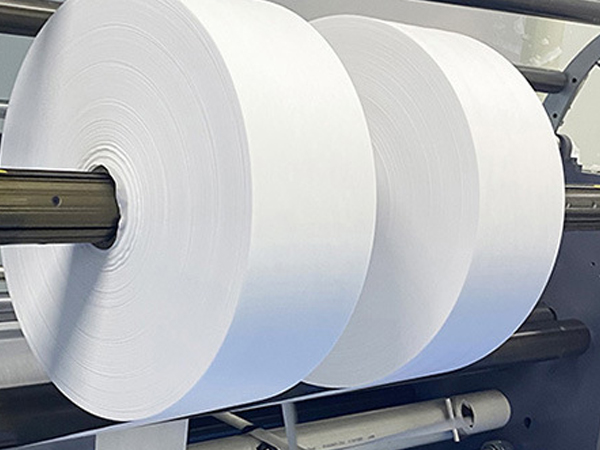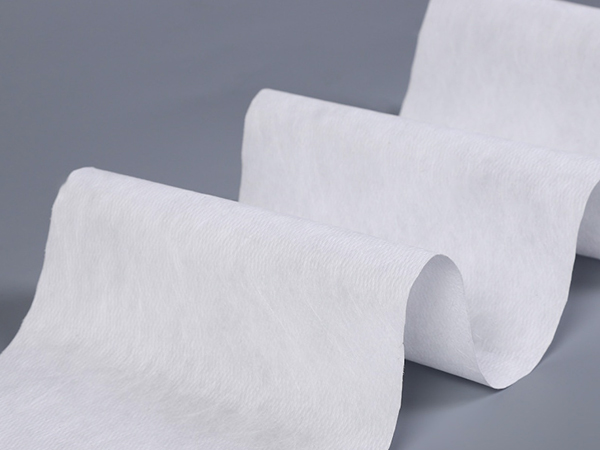- The 2025 China Professional Clothing Industry Conference was held in Ningbo
- Spunlace wipes are the guardians of cleanliness in modern life
- The 15th China Textile Academic Annual Conference was held in Nantong
- Roofing nonwoven fabric: A multi-functional protective companion for building roofs
- The New Vision 2025 Textile City New Generation Innovation Class has come to a successful conclusion

- Cellphone: +86-13430333258
- Email: qdvictorin@gmail.com
- Address: No.95 Kongquehe Wu Road,Jimo Garment Industrial Park, Qingdao City, Shandong Province, China
The demand in overseas markets has recovered, and the industry's exports have stopped falling and stabilized
China is the world's largest exporter of industrial textiles. With a complete industrial chain support capacity and continuous investment in technological research and development, the competitiveness of the industry's main products in the international market has steadily increased. Since the beginning of 2024, international market demand has gradually picked up. According to data from China's customs, the export value of China's industrial textiles industry in 2024 (based on the 8-digit HS code statistics of the customs) was 41.34 billion US dollars, increasing by 6.7% year-on-year, reversing the trend of consecutive three-year decline in exports since 2021.
Industrial coated fabrics are currently the largest export product in the industry. With the recovery of demand in major export markets such as Southeast Asia, China's export value of industrial coated fabrics to overseas markets reached 5 billion US dollars in 2024, representing a year-on-year growth of 12.9%. Among other traditional products, the export volumes of felt fabric/tents, cord (cable) textiles, canvas, and industrial fiberglass products returned to the growth channel, reaching 3.96 billion US dollars, 3.19 billion US dollars, 3.13 billion US dollars, and 2.14 billion US dollars respectively, increasing by 3.4%, 3.2%, 11.1%, and 8.5% year-on-year respectively. The export value of leather base fabric and packaging textiles was 2.23 billion US dollars and 1.7 billion US dollars respectively, decreasing by 2.7% and 1.3% year-on-year. The decline narrowed by 4.9 percentage points and 6.6 percentage points respectively compared with 2023.
Affected by the differences in demand in various application fields, the export of nonwoven fabrics and related products shows different trends. In 2024, the demand for nonwoven fabric rolls from China in overseas markets picked up. The export volume reached 1.516 million tons, increasing by 15.7% year-on-year, with a value of 4.04 billion US dollars, growing by 6.3% year-on-year. Among them, the export volume to the two major markets of Vietnam and the United States both increased by more than 20%. The export value of disposable hygiene products (such as diapers and sanitary napkins) reached 3.6 billion US dollars, increasing by 8.2% year-on-year. Although the growth rate slowed down compared to 2023, it still maintained a good growth momentum. Among them, exports to the US market resumed double-digit growth, and exports to emerging market countries such as Malaysia and Thailand continued to grow at a high speed. The value of medical dressings such as medicinal cotton, gauze and bandages exported was 1.09 billion US dollars, increasing by 6.7% year-on-year. The overseas market demand for masks has continued to weaken. The export value was 610 million US dollars, a year-on-year decrease of 31.6%. The export of nonwoven fabric protective clothing (including medical protective clothing) achieved growth for the first time since 2020, with an export value of 780 million US dollars, increasing by 7% year-on-year. The demand for wet wipes in the international market remained strong, with an export volume of 930 million US dollars, increasing by 23.3% year-on-year.
According to data from China's customs, in 2024, the import value of China's industrial textiles industry (based on 8-digit HS code statistics from the customs) was 5.09 billion US dollars, a year-on-year decrease of 2%, with the decline rate significantly narrowing compared to 2023.
From the perspective of major imported products, the import demand for nonwoven fabrics has been continuously declining since 2020. The import value in 2024 was 820 million US dollars, a slight decrease of 0.4% year-on-year, but the import volume increased by 9.4% year-on-year. In 2024, China's import demand for high-end industrial fiberglass products increased, with the import value and import price rising by 21.5% and 30.9% respectively year-on-year. The import demand for industrial coated fabrics and textiles for structural reinforcement has recovered somewhat, with import values increasing by 3.1% and 4.4% respectively year-on-year. In recent years, with the rise of domestic products and domestic trends and the continuous improvement of the competitiveness of China's hygiene textile enterprises, the import demand for disposable hygiene products such as diapers and sanitary napkins in China has further declined. The import value is expected to drop by 44.4% in 2024.
The year 2025 marks the conclusion of the 14th Five-Year Plan and is also a crucial year for further deepening reforms. At present, global economic and political uncertainties and instances have intensified. Under the influence of factors such as the intensification of geopolitical conflicts and the rise of trade protectionism, the stability of the global supply chain has been challenged, and the global economy still faces adjustment pressure. The challenge of insufficient domestic demand remains significant. However, with the implementation and effectiveness of a package of incremental policies in China, as well as the promotion of large-scale equipment updates and the trade-in of consumer goods, many positive signs of significant improvement have emerged in the domestic economy, and market confidence is being greatly boosted.
At present, China's industrial textile industry is gradually emerging from the phased adjustment after the COVID-19 pandemic, and the main economic indicators have returned to the growth track. However, the growth momentum still needs to be further consolidated. The structural contradiction between supply and demand is difficult to be fundamentally improved in the short term. The downward trend of finished product prices has not been fundamentally reversed, and some enterprises in certain fields are trapped in the predicament of "increasing revenue but not profit". In export trade, affected by the rise of global trade protectionism and the emergence of similar industries in emerging countries, the bargaining space for traditional export products has been further compressed, and the average profit margin level of the industry has decreased significantly compared with that before 2020. This trend is forcing enterprises to accelerate their transformation from low-cost competition to value competition. However, the downward pressure on prices is still difficult to be relieved in the short term, and the restoration of the industry's profitability needs to be achieved through a longer period of market clearing and technological upgrading.
Declaration: The content and template of this article are organized from the network, and the copyright belongs to the original author; If there is infringement, please inform in time and contact to delete.
- The 2025 China Professional Clothing Industry Conference was held in Ningbo
- Spunlace wipes are the guardians of cleanliness in modern life
- The 15th China Textile Academic Annual Conference was held in Nantong
- Roofing nonwoven fabric: A multi-functional protective companion for building roofs
- The New Vision 2025 Textile City New Generation Innovation Class has come to a successful
- Spunlace wet wipes solve daily cleaning troubles with their strength and become a good hel
- The China Textile Association is soliciting standardization demands in the field of indust
- Spunlace wipes: A soft and clean helper for daily life
- Overview of National fabric imports and Exports from January to July
- Woodpulp spunlace nonwoven fabric: The preferred raw material for spunlace wet wipes

